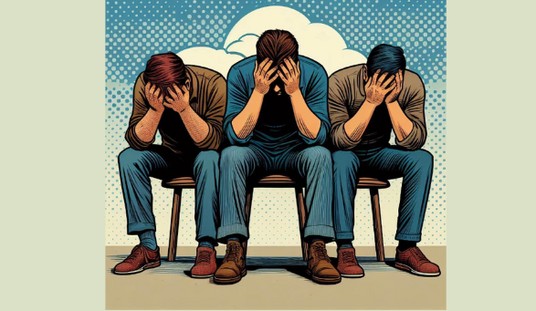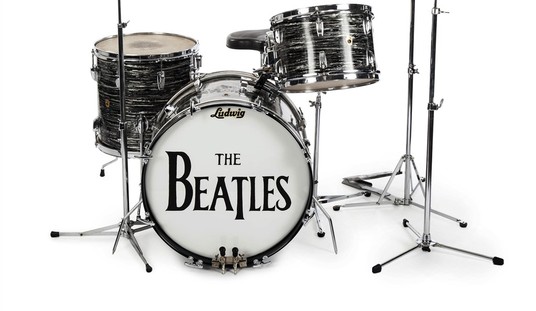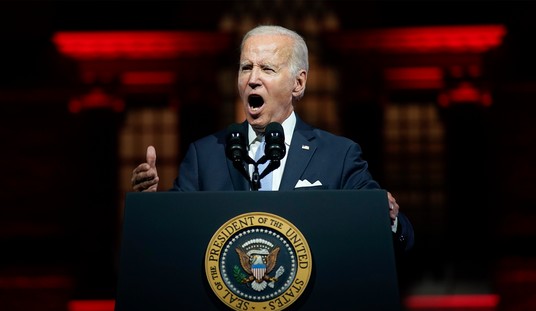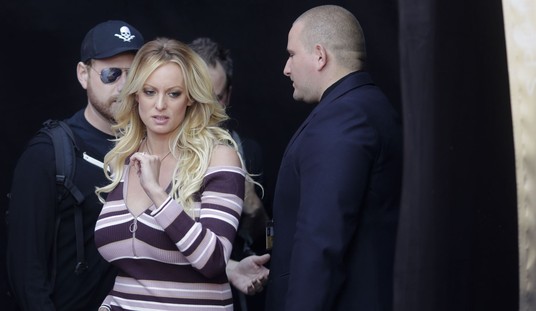
A gigantic poster of genocidal Bosnian Serb war criminal “Radovan Karadzic”:http://en.wikipedia.org/wiki/Radovan_Karad%C5%BEi%C4%87 hung on the outside wall of a hideous communist-style apartment block.
“Get a picture of that,” I said to my friend and traveling companion “Sean LaFreniere”:http://seanlafreniere.blogspot.com/ as I drove our rented car through the outer suburbs of Serbia’s capital Belgrade. I had the wheel and he had the camera.
“Too late,” he said.
We were driving fast on a four-lane road and were almost out of the city. Our road trip from Serbia to Kosovo via Bosnia, Croatia, and Montenegro was just beginning.
“That’s okay,” I said. “We’ll probably see another one.”

Housing blocks, New Belgrade, Serbia
We didn’t, however, see another one, not anywhere in Serbia or in Bosnia’s Serb-controlled Republica Srpska. Europe’s worst living political leaders still have a base of support among Serbs, but it’s slowly dwindling.

Communist architecture, New Belgrade, Serbia
Outer New Belgrade looks more or less like what I expected in a post-communist city in Eastern Europe, but Old Belgrade is beautiful, sophisticated, stylish, and fun. Neither Sean nor I had any idea what to expect from Serb villages aside from the fact that they’re in no way cosmopolitan as the capital is. Small Serb towns and villages — especially in the Republica Srpska — were also the least friendly places for any Americans brave enough to visit the former Yugoslavia as it violently came apart at the seams in the 1990s. Serbian-American relations are tense again since American-backed Kosovo declared independence from Serbia in February this year. Extremists in the capital responded by firebombing the American Embassy and a McDonald’s.

Countryside, Serbia
The countryside beyond the city limits was flat agricultural land that looked more or less like the American Midwest. Sean and I could have been in Iowa or Illinois. Bosnia, we knew, is famously much more rugged, and we’d be there in less than two hours.
“We have to stop before we reach the border,” Sean said. “I still have thousands of Serbian dinars.”
“Just exchange them in Bosnia,” I said.
“You can’t exchange them in Bosnia,” he said. “You can’t exchange dinars anywhere outside Serbia.”
“You can’t?” I said. “Are you sure?” I hadn’t heard that before and it didn’t sound right. He had a wad of dinars worth almost 200 dollars, though, so I pulled off the highway into a small town that looked just barely large enough that it might have a bank.
“Want to find a bar and drink some slivovitz with the locals?” I said. I was kidding slightly, but only slightly.

Serbian village
“Hmm,” Sean said. He didn’t know if he wanted to down slivovitz with drunk villagers or not. Neither did I.
We both wondered, though, how well we’d be received if we sidled up to a bar in the Serbian countryside and asked for shots of slivovitz in American English. With only a single exception, everyone we met in Belgrade was perfectly friendly and pleasant despite Serbia’s sometimes primitive anti-Americanism.

Orthodox church, Serbia
Sometimes I’m not sure what to make of even the primitive anti-Americanism, let alone the moderate variety. I later met an Albanian woman in Kosovo who frequently travels to Belgrade to visit friends. “I go there all the time,” she said. “I have friends there. I’m not paranoid about it. We go out and have a good time. But in the back of my mind I remember they are Serbs. One night I met a “Chetnik guy”:http://en.wikipedia.org/wiki/Chetniks. He couldn’t believe it when I said I was from Prishtina. He said Oh, I killed you during the war. I yelled at him. I screamed at him. I got so mad and felt “my eagle”:http://en.wikipedia.org/wiki/Flag_of_Albania coming out. But at the end he wanted to marry me.”
Our randomly selected small Serbian town had only one main street. Maybe we would see a bank and maybe we wouldn’t.
“There,” Sean said. “On the right.” They did have a bank. “Park.”
There was nowhere to park in front of the bank, so I found a place a few hundred feet down the road.
A badly dressed scruffy Serb man in his fifties who had not shaved in days stared holes through me as he walked toward our car. Sean paid no attention to the man, flung open his door, and started toward the bank by himself. I guessed that meant I would stay with the car.
Scruffy Guy came up to my driver’s side door. I looked around. Was I illegally parked? Was I in front of his house?
I stepped out of the car. He said something to me in Serbian.
“Do you speak English?” I said. “Do I need to move my car?”
He pointed to the license plate of the car and jabbed his open hand at me as though I owed him money.
“No,” I said. He wasn’t a parking attendant. “I am not giving you money.”
Scruffy Guy pointed at the license plate again.
“Beograd,” I said. “The car is from Beograd.” That was obvious from the “BG” on the plate. “So what?” I knew he couldn’t understand me, but I had to say something.
He demanded money more aggressively this time.
“No!” I said.
Scruffy Guy spat out an insult in Serbian and shuffled off. I impatiently spun the key ring around my index finger while waiting for Sean to change his money when Scruffy Guy grabbed the arm of a younger man on the sidewalk, turned him around, pointed at me menacingly as if I were a hated witch or a leper. He said God-only-knows-what in Serbian. He probably said “foreigner” in there somewhere, but I can’t be certain. The younger man narrowed his eyes at me briefly, then contemptuously brushed off Scruffy Guy and walked away.
Scruffy Guy wanted money or worse, and he wanted help from his townsfolk. So he pointed his finger at me and yelled something awful in Serbian. Heads turned from every direction. I had no idea what to expect, and I prepared to jump back in the car and lock the door if even a single person approached me.
I no longer had any interest whatsoever in drinking shots of slivovitz in a run-down bar in this town with these people.
Nobody approached me, though. All eyes turned from me to Scruffy Guy, whose reputation in town — I’d be willing to bet at this point — is worse than the reputation of travelers from outside like Sean and myself. His fellow citizens seemed initially startled by my presence, but they seemed to have no interest in doing or saying anything to me. Scruffy Guy was clearly frustrated by his inability to gin up a big scene.
Even so, I was relieved when Sean came back after changing his money. I faced hostility the instant I stepped out of the car, and I was worried he might have run into some trouble as well. He didn’t.
We crossed the border into Bosnia on a small village road in agricultural country. No cars were ahead of us in line at the remote border crossing, and none were behind us. The border police at each stop on our way out of Serbia and on our way into Bosnia stamped our passports without saying a word.

Serbian village
Bosnia didn’t look or feel like a new country at first. We had only crossed into the Serb-controlled Republica Srpska. This region of Bosnia now has a Serb majority because they ethnically-cleansed it in the mid-1990s.
Sean and I tried our best to follow the map from the border to Tuzla, a city outside the Republica Srpska where we could easily find the main highway to Bosnia’s capital Sarajevo. Almost every road sign, though, was in Cyrillic. Neither Sean nor I recognize most of the letters. It’s an easy enough alphabet to learn, and we were both able to decipher some of the letters and read it slightly, but the signs were still not what I would call helpful.

Most road signs in Serbia proper are written in both the Cyrillic and Latin alphabets, but the Serbian government in the Republica Srpska couldn’t bother with that courtesy even though the majority in Bosnia-Herzegovina use the Latin alphabet. I didn’t see a single road sign anywhere in Republica Srpska that pointed toward Sarajevo in any language or alphabet. All signs, instead, pointed to Belgrade or to small nearby villages.

Countryside, Republica Srpska, Bosnia-Herzegovina
And so we got lost. Thanks only to the location of the sun in the sky could we tell that we were heading north toward Croatia instead of south toward Sarajevo. We need to stop for directions, so I pulled into the parking lot at a gas station.
“Let’s both go inside,” I said and braced myself for another hostile encounter. Serbs in Bosnia tend to be more nationalistic than those in Serbia proper, and we had already had a few minor issues over there.
The station owner didn’t speak a word of English, but he understood where we needed to go. He pointed at the map and used hand signals to give us directions to Tuzla. He was perfectly pleasant and charming, but another younger man coldly sized me up from head to toe and let his eyes linger on my watch. I smiled at him as though he hadn’t just done that, but he kept up the Balkan Stare until Sean and I headed back to the car.
*
“Hey,” Sean said after another hour or so of driving. “There’s a mosque.”
On the hill to our left was the first Muslim village we had seen since we entered Bosnia almost two hours before.

Muslim village, Bosnia-Herzegovina
“It looks like a nice little town,” I said. It was just off the main road to Tuzla and Sarajevo, yet we both wanted to take a look and compare it with the Serb towns we had been driving through all day. So I turned off and drove up the hill toward the village with a mosque in its skyline.
The instant we entered the village we saw bullet and shrapnel holes in the walls.

Mortar or artillery scars, Muslim village, Bosnia-Herzegovina
None of the Serb towns or villages we passed through bore a single scar from the war that we could see, but the minute we saw a mosque, bang, just like that, we found ourselves in what was a war zone. I’m accustomed to seeing this sort of thing in the Middle East, but this was Europe.
Bosnia is a far cry from Iraq, though. Half the people we drove past on the village road were women. In an Iraqi village, all or nearly all would have been men. Women hardly ever leave the house in villages in most Arab countries. None of the women we saw in this Bosnian Muslim village wore an Islamic headscarf. In Iraq, all or nearly all village women wear an enveloping head-to-toe black abaya. This was the most outwardly secular Muslim village I had ever seen in my life, but it was typical of Muslim villages in Bosnia, Kosovo, and Albania as I would later see for myself.
The village was small and there was little to see, but neither Sean nor I were completely sure we had just pulled off the road to Tuzla. Perhaps we were lost again and didn’t know it. So I pulled into a car repair shop and rolled down the window to ask. A man stepped out of the shop and frowned slightly when he saw the license plate on the car. The first letters were “BG,” which told him we were driving a Serb car from Belgrade. Here we go again, I thought.
“Hi!” I said and tried to sound as aw-shucks American as possible. We aren’t Serbs, was what I meant to convey. We aren’t the people who shot up your houses. We’re from a country that kinda sorta helped you a little during the war.
The man smiled. He didn’t speak English, but he understood when I told him we were driving to Tuzla and he verified that the road we had just turned off was the right one.
So we continued driving toward Tuzla, in Bosnia proper outside the Republica Srpska, and wherever we saw mosques we also saw blown up houses.

Destroyed House, Bosnia-Herzegovina
There was pain and suffering on all sides during the war. No faction was entirely innocent. I take seriously the following observation written by Rebecca West in Black Lamb and Grey Falcon shortly before the outbreak of World War II: “English persons…of humanitarian and reformist disposition constantly went out to the Balkan Peninsula to see who was in fact ill-treating whom, and, being by the very nature of their perfectionist faith unable to accept the horrid hypothesis that everybody was ill-treating everybody else, all came back with a pet Balkan people established in their hearts as suffering and innocent, eternally the massacree and never the massacrer.”

Minefield warning, Bosnia-Herzegovina
Nevertheless, it’s obvious just from driving around that the Muslims of Bosnia really got hammered the hardest in the last war. I don’t mean to pick on the Serbs, but the visual evidence, as well as the documented evidence, is just overwhelming.

Destroyed house near Tuzla, Bosnia-Herzegovina
Two years ago Sean and I drove on a lark “from Istanbul to Iraq”:http://www.michaeltotten.com/archives/001119.html, and we passed through dozens of Turkish towns in the countryside on the way. Many Bosnian cities looked awfully familiar. “Welcome to Turkey,” Sean said. “We’re in Turkey.”
We weren’t, of course, in Turkey. But Bosnia was part of the Turkish Ottoman Empire for hundreds of years. The similarities didn’t surprise either of us in the slightest. There would hardly be any Muslims in Bosnia at all if it hadn’t been for the Turkish Empire’s expansion into the Balkan Peninsula.
Turkey is politically secular, and culturally secular to an extent. The Muslim parts of Bosnia are noticeably much more so. I don’t know why. Maybe it’s because Turks were Eastern Muslims before they ever pushed into Europe while Bosniaks were Europeans long before they converted to Islam. Perhaps the answer is simpler than that, or more complicated. I’m no expert in Balkan history, especially not ancient Balkan history, but I know what an Islamist environment looks like and Bosnia isn’t one of them. Wahhabi Islamists are trying to radicalize Bosnia, and they are a bit of a problem, but in no way did Bosnia remind me of heavily Islamist areas I’ve visited, such as Egypt and the Hezbollah-occupied regions of Lebanon.
*
We drove past a post-modern mosque outside Sarajevo.
“I want a picture of that,” I said and pulled the car into the driveway. Sean and I got out. A Muslim man walking out of the mosque flicked his eyes downward at the license plate and jabbed three fingers at Sean, muttered something rude-sounding in Bosnian, and walked around the car.
“Hi,” Sean said. “We’re Americans.” The man just walked on.
“What was that about?” I said.
“He just stuck three fingers at me,” Sean said.
“Like this?” I said and made the tri prsta, the three-fingered Serbian Nationalist salute.
“Yeah, that,” Sean said.
“Why the hell would he do that?” I said.
The tri prsta means different things depending on who you ask, but they’re all related in one way or another to Serbian Nationalism. Predrag Delibasic, a half-Bosnian and half-Serbian writer Sean and I met in Belgrade, told us the three fingers stand for the Serbian Orthodox Church, the Academy of Science, and the Military.
“Maybe he thought we’re nationalist Serbs,” Sean said, “and he was mocking us?”
I don’t know. Maybe he didn’t really mean to jab three fingers, and maybe he was just annoyed that I stopped the car in his walking path. Either way, I didn’t like how so many people looked at the license plate on the car to figure out who we were — or supposedly were — but I found myself doing the same thing to other people and their cars after I saw that they did it to us.
The next day Sean and I drove up one of Sarajevo’s big hills to get a look at the city from above.

Communist housing blocks from hill, Sarajevo
A defunct Austro-Hungarian military fort still sits up there, and it looks like it was used recently by at least one armed faction in the Bosnian War. We saw several mortar-sized holes in the walls.

Austro-Hungarian fort on hilltop overlooking Sarajevo
I parked the car in front of some residential homes at the steps leading up to the fort. A group of young Bosnian men sat at a table in the yard right in front of the car.
“Hi!” I said in English and tried to sound as American as possible. “How are you guys?”
“Hello,” one of them said.
I wanted them to know we weren’t Serbs in case they looked at the license plate. I wasn’t paranoid and thought it awfully unlikely that they would key the car or worse if they actually thought we were from Belgrade, but it only took one second’s worth of effort to make sure they didn’t.
*
“We need to stop in Mostar,” Sean said on our way out of Sarajevo toward Dubrovnik. “We have to see the Mostar Bridge.”
I wanted to see it, too. It’s a famous bridge built by the Turks in the 16th Century, and it was recently rebuilt after being destroyed by the Croatian Defense Council during the Bosnia War in 1993.
“We also need to get to Dubrovnik before dark,” I said. “This might be the only time we’ll ever get to see it, and I want some pictures.”
Dubrovnik is a spectacular walled city on the Croatian coast near the border with Montenegro. We booked a hotel room in Montenegro and needed to leave for Kosovo first thing the next morning, so there would be no time to go back to Dubrovnik if we missed it during daylight.
There was no time to stop for proper food in a restaurant, so we pulled into a gas station to stock up on road food. I hoped oranges, bananas, or anything that had some nutritional value would be available, but gas stations all over the world sell little other than junk food, it seems. They had peanuts and pistachios, but the rest of our stock was a pile of cookies, potato chips, chocolates, and croissants. And the croissants were really just Twinkies from Turkey in the shape of croissants.
Sean and I wanted to speed through Bosnia and get to Croatia as quickly as possible, but the Opel we rented in Belgrade drove like it was built with a moped engine. Step on the gas and nothing much happens unless you’re at a dead stop on a flat road. Passing slow trucks was impossible if there was a bend in the road anywhere in the same time zone.
The destruction wrought from ethnic-cleansing, including mass graveyards as well as blown-up houses and villages scourged by artillery fire, stretched from one end of Bosnia to the other. It was horrible.

Destroyed Muslim village, Bosnia-Herzegovina
In one otherwise beautiful town on the shore of a lake we drove past a mosque minaret with its top shot off.
“Let’s drive to that mosque,” Sean said. “I want a picture of that.”
“No time,” I said. “We have to get to Dubrovnik before dark.”
“It will just take a second,” he said.
“Would you rather photograph that mosque or Dubrovnik?” I said.
“It will just take a second!” he said again. “Just make a left here.”
I made a left.
“You have a second,” I said.
I gave Sean a hard time, but was quietly glad he talked me into it. I wanted to be talked into stopping at least once in a while. We were short on time, but neither of us wanted to see Bosnia beyond Sarajevo only from the inside of a car.

Destroyed mosque minaret, Bosnia-Herzegovina
The top of the minaret just above the muezzin’s speakers for the call to prayer had been blown clean off. Seeing destroyed churches and mosques in the Balkans reminded me of the Taliban’s destruction of Buddha statues at Bamiyan with anti-aircraft guns. Two blocks away from the decapitated mosque was an intact Serbian Orthodox church. This town may once have been a model of inter-religious co-existence, but it’s not anymore.
“Okay,” I said. “Let’s get to Dubrovnik.”
This time Sean got behind the wheel. I had done much of the driving and needed a break.
Bosnia is a troubled country with a dark recent past, but it’s also extraordinarily beautiful. For some reason that I can’t quite explain, it’s hard to imagine such a terrible war erupting amid such breathtaking scenery. Sean nearly ran the car off the road when we drove through a canyon between Sarajevo and Mostar. “Oh my God,” he said, “look at this place!”

Canyon between Sarajevo and Mostar, Bosnia-Herzegovina
I was glad he was driving or I might have actually gone off the road while gawking at the mountains and canyons.
Mostar, also, is stunning. Sean and I couldn’t just drive through it without stopping, at least briefly. And besides, we were tired of road food. Potato chips and chocolate chip cookies could pass for lunch when we were in college, but not today.
So we sat at an outdoor cafe near the recently repaired bridge, ate Bosnian kebabs, and drank from bottles of locally brewed beer as the muezzin’s haunting call to prayer from local mosques echoed off the looming walls of the mountains.

Mostar Bridge, Bosnia-Herzegovina
Parts of Bosnia look and feel like Turkey, but Mostar looks and feels like nowhere other than Bosnia.

Mostar, Bosnia-Herzegovina

Mostar, Bosnia-Herzegovina
It’s a beautiful place and, aside from the mosques and a few blown-up buildings that hadn’t been fixed yet, it felt no different from anywhere else in Europe. Westerners who may be afraid of Bosnia for its Islam, and who may worry that places like Sarajevo and Mostar might resemble Iraq or the rough and reactionary immigrant neighborhoods in cities like Paris and London, have no idea what they are missing. We saw no hijabs or bearded fanatics, but plenty of liberated women and their hipster boyfriends drinking beer and wine and having a wonderful time. Bosnia, despite its troubled past, is benign.

Young people, Mostar, Bosnia-Herzegovina
“Let’s go,” I said. “Mostar is great, but the sun is going down and we don’t want to miss out on Dubrovnik in daylight.”

Catholic Church, Mostar, Bosnia-Herzegovina
We weren’t far from the Croatian coast. It was obvious that many Catholic Croats live in Mostar and in the surrounding region. We saw lots of Croatian flags flying from houses and draped over electrical wires as we moved to the edge of Bosnia and toward the Croatian border.
*
The coastline of Croatia is extraordinary. Steep hills and mountains rise sheer from the shores of the sea. Wooded islands just off the coast mean the view is stunning in every direction.

Croatian coastline

Croatian coastline
The sun went down just as the outskirts of Dubrovnik came into view.

Sunset, Croatia

Dubrovnik, Croatia
“We’re just minutes too late,” I said and sighed. “Out pictures are going to suck.” I almost said we shouldn’t have stopped in Mostar, but it would have been a mistake to skip Mostar. What we needed was more time.

Old city walls, Dubrovnik, Croatia
Perhaps it was just as well. It’s impossible to capture the magic of Dubrovnik in photographs. The medieval walled city on the water is gorgeous and perfect from every possible angle, but what’s really special is the feel of the place as an organic whole.

Stairs, old city Dubrovnik, Croatia

Old city, Dubrovnik, Croatia
“This is the most amazing place I have ever seen,” Sean said.
I almost objected. Paris is amazing. Istanbul is amazing. The old city of Jerusalem is amazing. Is Dubrovnik really better than those three? I couldn’t bring myself to object, though. If Dubrovnik isn’t the most amazing place I’ve ever seen, it certainly ranks at the top with the others.
We both kept saying “wow,” around every new corner and wondered why on Earth it took so long to finally visit. I should have gone to Dubrovnik years ago, just after the war ended.
You would not have wanted to be there during the war. At the gate leading up to the old city walls is a map that shows every site that was hit and how much damage it caused.

“Grad Dubrovnik,” it says. “City map of damages caused by the aggression on Dubrovnik by the Yugoslav Army, Serbs and Montenegrins, 1991-1992.”
Dubrovnik was listed by UNESCO as a World Heritage Site twelve years before the Yugoslav Army shelled and burned it. Aside from the map, however, I saw no evidence that it had ever been under siege during the war. The reconstruction job in Sarajevo impressed me, but they have done an even better job in Dubrovnik.
Many Croatians still nurse a grudge against Serbs — and many Serbs answer in kind — for what happened during the violent demise of Yugoslavia. Some Croatians would like to secede from the region altogether and claim that they are “not Balkan people at all”:http://books.google.com/books?id=qTLSZ3ucaZMC&pg=PA148&lpg=PA148&dq=croatia+%22not+part+of+the+balkans%22&source=web&ots=pQxaDiAGPO&sig=K2ONNTgXBFFPhzLizPPABMKvi3s&hl=en&sa=X&oi=book_result&resnum=9&ct=result#PPA148,M1.
Croatia, however, is part of the Balkan Peninsula — “at least its southern half is”:http://en.wikipedia.org/wiki/Balkans.
And Croatia was involved in two of the recent wars in the former Yugoslavia. They were victims of ethnic-cleansing and mass-murder by Serbs, but they dished out the same treatment to both Serbs and Bosniaks in Croatia and Bosnia. They haven’t liberated themselves from geography, nor have they exempted themselves from the rough and dirty politics of the region.
Even so, the minute Sean and I stepped inside the walls of the ancient city of Dubrovnik, I felt that at least this part of Croatia really was different, even though it lies below the Danube-Sava-Kupa line that commonly defines the region. For the entire trip so far I had half-jokingly called Bosnia and Serbia the “Middle East of Europe,” but the joke is I was only half-kidding. Politics in Serbia uncomfortably resembles politics in the Arab world. Bosniaks share the religion of most of the Arabs. Belgrade and Sarajevo felt unmistakably Eastern in different ways.
Dubrovnik, though, looked and felt emphatically Western. I felt like I had passed through an invisible barrier in the dimension and had returned “home” the instant I walked through the gate. I can’t tell you what, exactly, made me think of Dubrovnik as “home.” I had never been there before, I knew almost nothing about the place in advance, and I stayed for such a brief period I had no time to get past the disorientation and confusion of being in a strange new city and country. But I know what “home” looks and feels like when I freshly return from somewhere else — especially while my heightened sense of stranger’s awareness is still at its peak.
Historian “Peter F. Sugar”:http://www.amazon.com/Southeastern-Ottoman-1354-1804-History-Central/dp/0295960337/ref=sr_1_5?ie=UTF8&s=books&qid=1213929121&sr=8-5 notes Dubrovnik’s unusual history in the region in Southeastern Europe Under Ottoman Rule, 1354 — 1804. “The relationship between the little city-state and the large empire,” he wrote, “is extremely interesting and sui generis. Dubrovnik was the only vassal state of the Ottoman Empire whose territory was never invaded during its long vassalage, in whose internal affairs the Ottomans did not once interfere, and whose status was ambiguous from the point of view of Muslim-Ottoman jurisprudence.”

Dubrovnik, Croatia
Most churches in Croatia are Catholic. Maybe it was all in my head, but I felt closer to Italy on the other side of the Adriatic than I did to Bosnia even though Bosnia was less than five miles away. More tourists poked around Dubrovnik than I had seen in Sarajevo or Belgrade. Much of the city inside the medieval walls was designed on a grid pattern. The city once rivaled Venice, and it looked the part.
Still, there was an elusive and undefinable X factor about the place that was unmistakably Western, and I couldn’t pin down what it was. I do not know why, but it was somehow obvious to me that, unlike much of the Balkan Peninsula, Dubrovnik had never been culturally transformed by the Turks. Dubrovnik’s compass points only West. The East is at their backs just over the mountains.
*
Montenegro didn’t strike me as Western the way Dubrovnik had just done. Montenegro is just…Montenegro.
Montenegro means Black Mountain. In the local language, Black Mountain is called Crna Gora. The Turks absorbed Montenegro into their empire, but it remained a largely autonomous island of Christianity in a sea of Muslim rule — much as Maronite Catholic Mount Lebanon did. Its mountains — which are actually green with forest — are so tall and so sheer that it must have extraordinarily difficult to safely send ground forces in and keep them there if their purpose was to put the country’s people under the boot. Anyone who would have wanted to forcibly oppress Montenegrins would have been wise to look upward in terror and say never mind. The Ottomans were, in fact, thrown out entirely at the end of the 17th Century.
Sean and I couldn’t see Montenegro yet, though, because we drove along the coast in the dark. It’s spectacular. I knew that. I’ve “seen”:http://www.houseinmontenegro.com/images/montenegro-houses.jpg “the”:http://www.montenegrotravel.net/wp-content/uploads/2007/05/montenegro-photo1.jpg “pictures”:http://www3.nationalgeographic.com/places/images/photos/photo_lg_montenegro.jpg. But we drove along some of the world’s most extraordinary coastline on a moonless night and missed it entirely.
Well, almost entirely.
“Look at that!” I said.
What looked like a well-lit Great Wall of China shot straight up the side of a mountain.

Kotor Wall, Montenegro
“The wall”:http://images.google.com/imgres?imgurl=http://www.discover-montenegro.com/Foto/Kotor/Stari%2520Grad/Kotor-City-Walls.jpg&imgrefurl=http://www.discover-montenegro.com/kotor_stari_grad.htm&h=357&w=530&sz=43&hl=en&start=4&sig2=cE_0DiJYksXr8D3Vp6wRXw&um=1&tbnid=OBd7G7lxz9o0pM:&tbnh=89&tbnw=132&ei=EiBXSKSePIGaoQSl6PiBAw&prev=/images%3Fq%3Dkotor%26um%3D1%26hl%3Den%26client%3Dfirefox-a%26rls%3Dorg.mozilla:en-US:official%26sa%3DG rose above the ancient city of “Kotor”:http://www.welterbestiftung.org/images/Kotor-gross.jpg, presumably to prevent any hostile force from raining hell upon the townsfolk from higher ground. I wished we could have slowed down and seen Montenegro properly in the daylight, but we had to content ourselves with seeing part of it the next afternoon as we took the winding narrow road up into Kosovo.
The country is tiny, but it seemed like it took us all night to reach our hotel on the dark and twisting coast road.
“Where exactly is our hotel anyway?” Sean said.
“It’s just outside Bar,” I said.
“Bar?” he said. “The town’s name is Bar? I don’t trust a city with only three letters.”
Montenegro
Kotor. Budva. Ulcinj. Bar. Who outside of the Balkans has heard of these places in Montenegro? I knew the capital of the country was called Podgorica, but it wasn’t until I actually went to the former Yugoslavia that I had a clue how to pronounce it. (Pode-gore-EET-suh.) If I weren’t a long-time geek about the Balkans, and if I didn’t have a jones to see these countries for myself, I would not have heard of any of these places in Montenegro.
The only thing we really saw of Montenegro on our single night in the country was our hotel room that looked like the inside of the Brady Bunch house.

1970s hotel room, Montenegro
I unfolded our map to plot our route for the next day. Sean and I noticed that if we cut short our sleep time we could make a quick detour around Lake Skadar inside Albania before heading up into Kosovo.
“We could have breakfast in Shkodra,” Sean said.
“Shkodra,” I said. (The city is also known as Shkoder.) “It sounds exotic and strange. Like a city named by Klingons.”
Many cities and countries in the Balkans have strange-sounding names in their original languages. Most Westerners couldn’t even name which continent they belong to if their names were not translated. Some are straightforward enough: Serbia is Srbija, Kosovo is Kosova, and Macedonia is Makedonia. But Croatia is locally known as Hrvatska. (I like that name, Hrvatska. It’s fun to say, and it has more gravitas than Croatia. I think we should all start calling Croatia Hrvatska.) Montenegro is Crna Gora. Albania is known by Albanians as Shqiperia. Its name means Land of the Eagles.
“I should call up my mother,” Sean said, “and tell her we just left Hrvatska, we’re in Crna Gora, and we’re on our way to Shqiperia. What? she’d say. Where the heck are you? I thought you were in Europe. We are, I’d say. These are countries in Europe. No they aren’t.”
Neither Sean nor I knew the first thing about Shkodra, the mysterious-sounding place in the supposedly wild north of Shqiperia where tourists just do not go. Hardly anyone went anywhere in Albania until recently. Most outsiders’ mental maps of the place might as well have been marked with the words Here There Be Dragons. All I knew then is that Northern Albanian had a reputation as the most lawless place in Europe after a devastating economic and political collapse in the late 1990s.
Robert Young Pelton’s Web site “Come Back Alive”:http://www.comebackalive.com/df/dplaces/albania/index.htm still warns would-be travelers about the region where Sean and I were going under his heading Dangerous Places: “In just a few short years Albania has had the distinction of changing from a country with the most paranoid and overcontrolled communist state ever to a country without a state. It was tricky, but Albanians have risen to the challenge to become Europe’s most lawless people at the turn of the century…Being a foreigner, unless you happen to know a couple of the local banditos, you stand an excellent chance of being fleeced. The minute you walk in the door and open your mouth, the $ sign will start ringing for just about everybody there – except you.”
Whether that was still true of Northern Albania or not (it isn’t), I didn’t know. And neither did Sean. And we were going in there with Belgrade plates on the car.
We left first thing the next morning.
To be continued…
Post-script: If these dispatches are worth something to you, please consider a contribution and help make truly independent writing economically viable.
You can make a one-time donation through Pay Pal:
[paypal_tipjar /]
Alternately, you can now make recurring monthly payments through Pal Pal. Please consider choosing this option and help me stabilize my expense account.
[paypal_monthly /]
If you would like to donate for travel and equipment expenses and you don’t want to send money over the Internet, please consider sending a check or money order to:
Michael Totten
P.O. Box 312
Portland, OR 97207-0312
Many thanks in advance.
All photos copyright Michael J. Totten and Sean LaFreniere










Join the conversation as a VIP Member